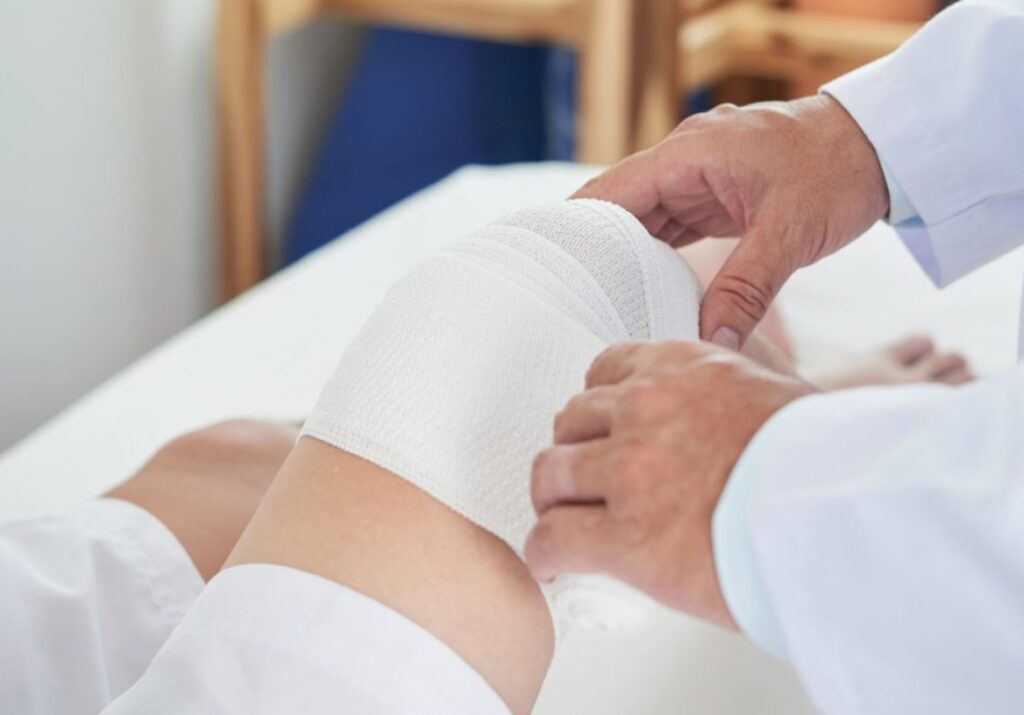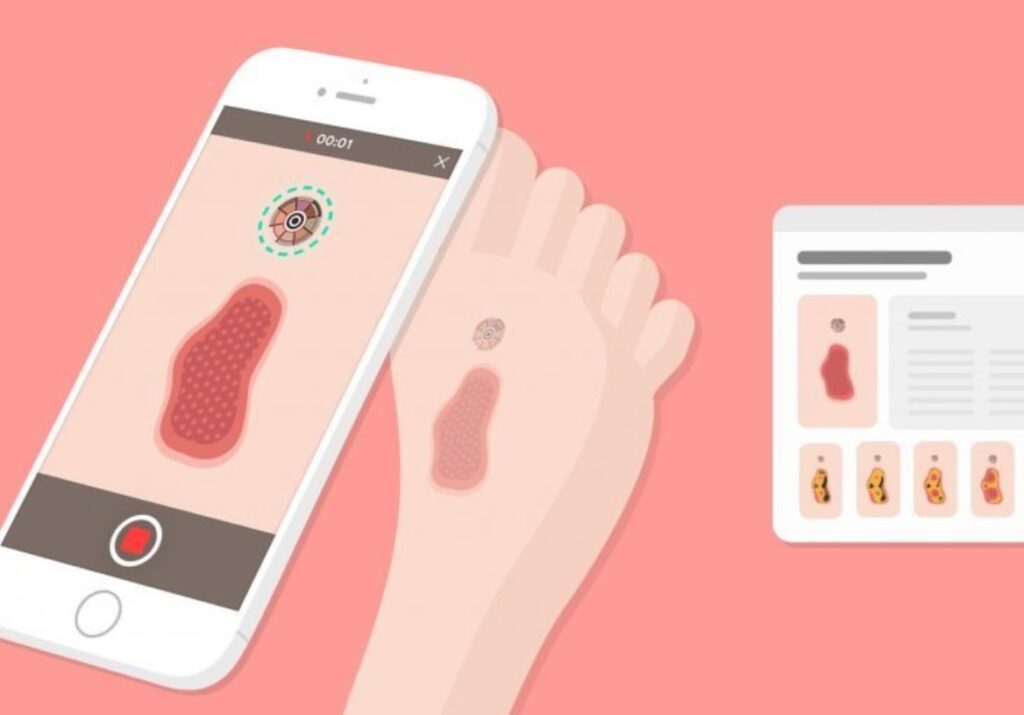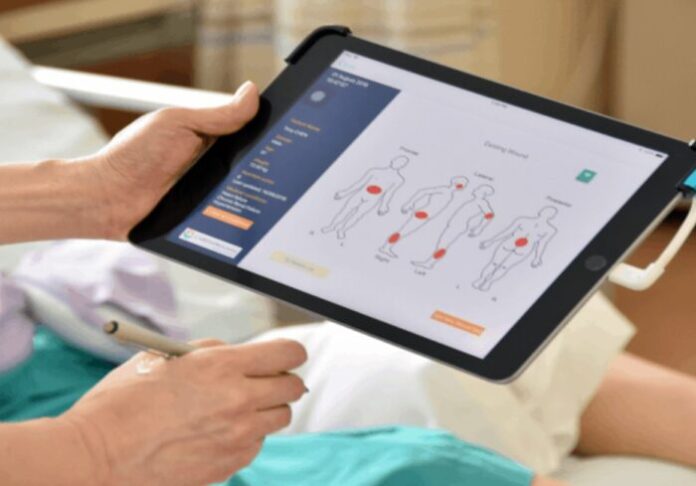Artificial Intelligence (AI) is widely being used in the healthcare industry, along with wound care management (Click here for more information). While AI might not be much be implemented into the frontline of wound care management, it is the fact that technology is not having a positive impact on the market. Machine learning (ML) and Big Data interpretation are making a difference in the clinical testing phase of developing new healthcare products. The advanced algorithms help to diagnose the minute detail during the testing.
The holistic approach of capturing data refers to the patterns and potential applications that are not noticed earlier. The outcome of the clinical testing is several technological advancements that are continuously accelerating. One more significant benefit of deploying AI technology is that it gives a new lease of life to traditional products as the new applications are identified from the existing ones.
Implementing wound care treatment plans for healthcare providers

Unlike earlier, the wound care management centers are more certain in confirming venous etiology and diagnose venous ulcers due to the advanced color duplex ultrasound scanning and other imaging technology. Thoroughly analyzing radiology images is one of the key potentials of AI because of its machine learning and cloud computing features. AI acts as a cognitive assistant to help doctors to identify wounds faster and accurately by measuring wounds. It helps in leveling burdens like exudate, protease, and bacteria.
Many doctors and clinicians are encountering the challenge of the introduction of new products and research. By evaluating the key attributes from a patient’s file and comparing them to the clinical guidelines, research, and historical data, Artificial Intelligence (AI) can help to compare different products, figure out the risks of wound healing approaches, and predict medical results.
However, AI and other advanced technologies can not replace wound care clinicians. A patient suffering from trauma or burns needs emotional comfort and support from healthcare providers that help to cope with the physical as well as psychological pain. Building a good doctor-patient relationship, medication is imperative and cannot be replaced by AI.
Home care assistance for patients

Artificial Intelligence (AI ) is the ultimate fit for those patients with chronic wounds. It helps to gain detailed information without the need for in-person consultations. And that happens at home between doctor’s visits. It attracts rural patients as compared to urban ones. The rural patients usually prefer not to travel long to the wound care centers.
The advanced AI technology can help for consistent patient monitoring and allow doctors to follow-up care remotely with maximum information. Deploying a virtual healthcare assistant allows patients to control the location and timing of acquiring customized wound care solutions.
The chronic wounds that are very hard to heal like diabetes complications, obesity, cardiovascular disease, are so much related to lifestyle. Actually, patients should choose to live a healthier life to control the syndromes.
When AI capabilities are amalgamated with wearable sensors, the patient’s everyday situation along with their family and the treatment outline presented by the physicians, and then precautions given based on the needs and habits of the patient. Eventually, there are chances that AI will prevent chronic wounds from the initial stage by providing 24×7 proactive and personal wound care management.
Artificial Intelligence and Wound Care Management

Artificial Intelligence (AI) faces the challenge of high-quality data when it comes to wound care management. As huge data sets comprising all relevant variables like medication history, demography does not exist for the majority of cases. Hence, there are no products integrating the tech used in the healthcare frontline. Quality control and data standardization have been in the process of improvement. Their standardization and integration of data inputs can enhance over time – both of which are the primary deployment of AI in wound care.
In order to explore the potential, the first step is the need for a high-quality method of documenting and tracking the healing process of wounds. The standardization of images means that it can track changes in the wound’s progress accurately. It means the healthcare providers can effectively examine how much the wound is healing. By using the right platform, the benefits of building a highly accurate data set and driving it with Machine Learning and AI algorithms. The algorithms can meet both clinical care and research objectives for organizations.
The Future of AI Based Wound Care Management

AI is being used in various aspects of wound care though it is not yet used for real-time clinical care settings., we can still get excited about the potential of the technology when it does arrive on the market. The treatments of patients with a low probability of effectiveness can be discarded and those that benefit some way or other can be labeled accordingly. The provision of wound care management in the post-AI future can provide patients and payers the option to choose cheaper treatments that have a longer healing time or more expensive treatments that heal faster. It is a big change when outcomes are extremely difficult to predict accurately.
Though it might look like a long way to cover at the present moment, the powerful features of Artificial Intelligence (AI) in the area signifies that thorough research is being conducted and development is increasing day by day. As technology is being produced by companies because of the technology and tools needed to digitize wound care management that relies on the traditional process.
Going forward in the future, the role of AI in wound care management is focused on acquiring and managing that data. Further, it will help physicians to deliver more consistent care and make predictions more accurately. The only thing certain about companies is that they are coming out of their comfort shells and embracing and deploying the power of AI in wound care management. Those companies who want to go parallel with the trends can have the foresight to lead instead of being left behind or made obsolete while the newly tailored wound care management is thrust upon them.









